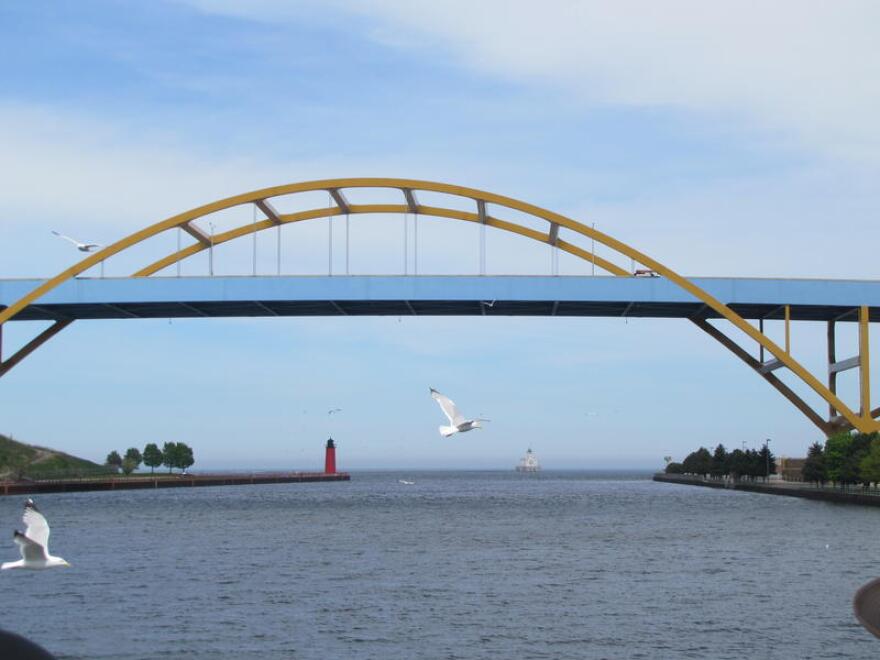Milwaukee’s rivers have slowly been revitalized through a variety of cleanup projects in recent years. But, the estuary — the area in which the Milwaukee, Menomonee and Kinnickinnic Rivers meet Lake Michigan — is still one of the most environmentally degraded sites on the Great Lakes due to contamination caused by decades of industrial waste.
The estuary has a federal designation as an “area of concern.”
But change is coming. Years of planning has led to a massive $400 million cleanup project.
Brennan Dow is overseeing the effort. He's the Wisconsin DNR's Milwaukee Estuary and Sheboygan River Area of Concern coordinator. An estimated 130,000 truckloads of material will be removed during the cleanup. Dow says a multitude of partnerships has made the gargantuan undertaking possible.

“It’s a large effort, and I think, being able to have a lot of, what we call, non-federal sponsors like the city and the DNR, WE Energies, and Milwaukee County and others as a part of that effort as well as having supporting cast like Milwaukee River and Harbor District and other partners to be able to help kinda all come together as one and push for that and do it all at once,” he says.
Dave Misky is assistant executive director of the Redevelopment Authority for the city of Milwaukee. He calls the collaboration “historic.”
“We’re all rowing in the same direction, that to have this collaborative approach, it’s not something this region sees much,” he says.
Misky explains that getting everyone to work together and pool their resources on this cleanup was key to securing assistance from the federal government.
Jennifer Bogler Berceda is the executive director of Milwaukee Riverkeeper. She says her organization's role is to keep community members engaged and informed on the status of the project.
The Milwaukee Estuary Areas of Concern's key projects include:
- Greater Milwaukee Estuary AOC Cleanup
- Dredged Material Management Facility
- Grand Trunk Wetland Restoration
- Burnham Canal Wetland Restoration
- Kletzsch Park Dam Fish Passage
While these efforts will mean disruptions in some neighborhoods, Bogler Berceda says this is a once in a generation opportunity to reclaim the water.
“Milwaukee Riverkeeper wants to see a day when we have truly swimmable, fishable, drinkable water and people want to go swimming in our rivers again. That’s the day we look forward to,” she says.
Bolger says a key element of the clean up is the Community Action Committee. Its role is to make sure the public's perspective is factored in as projects move from plan to implementation.
Have an environmental question you'd like WUWM's Susan Bence to investigate? Submit below.
_







